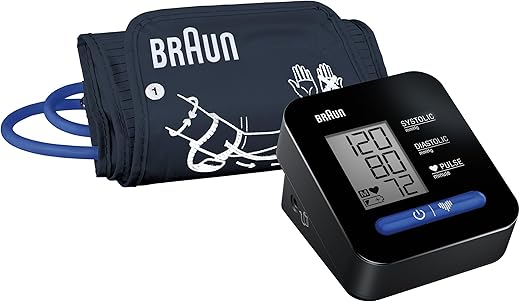









Understanding Operation Monitors: Your Guide to Enhanced Operational Efficiency
In today’s fast-paced world, businesses are constantly seeking ways to streamline their operations. Enter the operation monitor—a powerful tool that can transform the way you manage your resources, track performance, and make informed decisions. But what exactly is an operation monitor, and how can it benefit your organization? In this article, we’ll delve into the intricacies of operation monitors, explore their features, and discuss how you can leverage them for maximum efficiency.
What is an Operation Monitor?
An operation monitor is a software application or system designed to oversee and manage various aspects of business operations. Think of it as the control tower of your organization, providing real-time data and insights that allow you to maintain smooth sailing. Whether you’re in manufacturing, logistics, or service delivery, an operation monitor can help you track key performance indicators (KPIs), monitor workflows, and identify bottlenecks before they escalate into significant issues.
Key Features of Operation Monitors
When considering an operation monitor for your business, it’s essential to understand the features that can make or break your operational efficiency. Let’s explore some of the standout functionalities you should look for:
1. Real-Time Data Tracking
Imagine trying to navigate a ship without knowing your current location or the weather conditions. Similarly, without real-time data tracking, making informed decisions becomes nearly impossible. An effective operation monitor provides up-to-the-minute information on various operational metrics, enabling you to react swiftly to changing circumstances.
2. Customizable Dashboards
Every business is unique, and so are its monitoring needs. Customizable dashboards allow you to tailor the information displayed according to your specific requirements. By presenting the most relevant data at a glance, you can easily identify trends and issues that demand your attention.
3. Automated Alerts and Notifications
Picture this: you’re at a crucial stage in a project, and suddenly, a critical issue arises. Without timely alerts, you might miss the opportunity to address it before it spirals out of control. Operation monitors can send automated alerts for anomalies, ensuring you stay ahead of potential problems.
4. Integration Capabilities
In today’s interconnected digital landscape, your operation monitor should seamlessly integrate with existing software and systems. Whether it’s your Customer Relationship Management (CRM) or Enterprise Resource Planning (ERP) software, integration capabilities enable a holistic view of your operations.
5. Reporting and Analytics
Data is only as good as the insights you can extract from it. A robust operation monitor will come equipped with reporting and analytics features that allow you to analyze trends over time, assess performance against benchmarks, and make data-driven decisions.
Why Invest in an Operation Monitor?
Investing in an operation monitor is akin to upgrading from a manual typewriter to a modern computer. The benefits are profound and far-reaching. Here’s why you should consider making this leap:
1. Enhanced Efficiency
By providing real-time insights and automating repetitive tasks, operation monitors significantly enhance overall efficiency. With more time to focus on strategic initiatives, your team can work smarter, not harder.
2. Improved Decision-Making
With the right data at your fingertips, decision-making becomes less of a gamble and more of a calculated strategy. Imagine having the foresight to anticipate market changes and adjust your operations accordingly.
3. Cost Savings
Streamlining operations often leads to substantial cost reductions. By identifying areas of waste and inefficiency, you can allocate resources more effectively and, ultimately, improve your bottom line.
4. Greater Accountability
An operation monitor fosters a culture of accountability. With clear metrics and performance indicators, team members are more likely to take ownership of their responsibilities and strive for excellence.
How to Choose the Right Operation Monitor
Choosing the right operation monitor for your business can feel overwhelming, but it doesn’t have to be. Consider these steps to guide your decision-making process:
1. Assess Your Needs
Start by identifying the specific challenges you face in your operations. Are you struggling with tracking performance, or do you need better data visualization? Understanding your needs will help you select a solution that addresses your pain points.
2. Research Options
Once you know what you need, research various operation monitors available in the market. Look for reviews, case studies, and testimonials that can provide insights into the effectiveness of different solutions.
3. Request Demos
Don’t hesitate to request demos from potential vendors. A hands-on experience will give you a clearer picture of how the system works and whether it aligns with your operational goals.
4. Consider Scalability
As your business grows, your operational needs will evolve. Choose a monitor that can scale with your organization, ensuring that you won’t outgrow your solution in a few years.
Conclusion
In a world where every second counts and every decision can make a difference, an operation monitor is not just a luxury; it’s a necessity. By harnessing the power of real-time data, customizable dashboards, and integrated systems, you can elevate your operational efficiency to new heights. As you embark on this journey, remember that the right operation monitor is out there, just waiting to help you navigate the complexities of modern business.
FAQs
1. What industries benefit most from operation monitors?
Operation monitors are beneficial across various industries, including manufacturing, logistics, healthcare, and retail. Essentially, any sector that relies on data-driven decision-making can reap the rewards.
2. How do operation monitors improve team collaboration?
By providing a centralized platform for tracking performance and sharing insights, operation monitors facilitate better communication among team members. Everyone can access the same data, fostering alignment and collaboration.
3. Are operation monitors difficult to implement?
While the implementation process may vary depending on the system and your organization’s complexity, many modern operation monitors are designed with user-friendliness in mind. With proper training and support, your team can quickly adapt to the new system.
